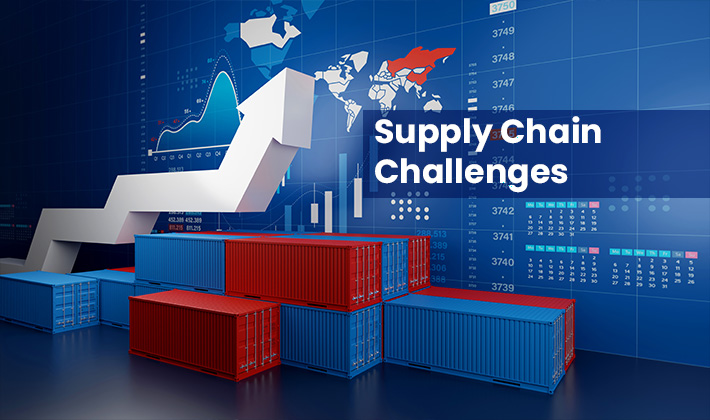
Challenges in the Supply Chain: Ongoing Issues and Disruptions
Global supply chains are facing significant challenges, impacting industries across the board. These disruptions, fueled by various factors, have exposed vulnerabilities and prompted businesses to seek solutions to mitigate their effects.
Key Issues
- Logistical Bottlenecks: Supply chains are grappling with logistical bottlenecks, particularly at ports and transportation hubs. Congestion and delays in shipping have caused widespread interruptions in the timely delivery of goods.
- Material Shortages: Many industries are experiencing shortages of essential raw materials. This is partly due to increased demand and partly due to disruptions in production facilities around the world.
- Labor Shortages: A shortage of skilled labor has exacerbated supply chain issues. Many sectors are struggling to find and retain workers, which has slowed down production and distribution processes.
- Geopolitical Tensions: Trade policies and geopolitical conflicts have led to uncertainties and disruptions in international trade. Tariffs, sanctions, and export restrictions have complicated global supply chains.
- Natural Disasters and Climate Change: Extreme weather events and climate-related issues have damaged infrastructure and disrupted supply routes, leading to delays and increased costs.
Impacts on Industries
- Automotive: The automotive industry has been heavily affected by semiconductor shortages, leading to production delays and increased vehicle prices.
- Retail: Retailers are facing inventory shortages and increased costs due to delays in shipping and supply chain disruptions, impacting product availability and pricing.
- Healthcare: The healthcare sector is dealing with shortages of critical medical supplies and pharmaceuticals, which can affect patient care and treatment options.
Potential Solutions
- Diversifying Supply Sources: Companies are looking to diversify their supply sources to reduce reliance on single suppliers or regions. This strategy can help mitigate risks associated with supply chain disruptions.
- Investing in Technology: Adopting advanced technologies like AI and blockchain can improve supply chain visibility and efficiency. These technologies help in predicting disruptions and managing inventory more effectively.
- Building Resilience: Businesses are focusing on building more resilient supply chains by improving risk management strategies and creating contingency plans to handle unexpected disruptions.
- Strengthening Partnerships: Enhancing collaboration with suppliers and partners can lead to better communication and coordination, helping to address supply chain issues more effectively.
- Sustainability Initiatives: Companies are investing in sustainable practices and local sourcing to reduce their environmental impact and dependency on global supply chains.
Conclusion
The challenges in global supply chains are complex and multifaceted, affecting a wide range of industries. Addressing these issues requires a combination of strategic planning, technological investment, and collaborative efforts. By implementing effective solutions, businesses can enhance their supply chain resilience and better navigate future disruptions.





